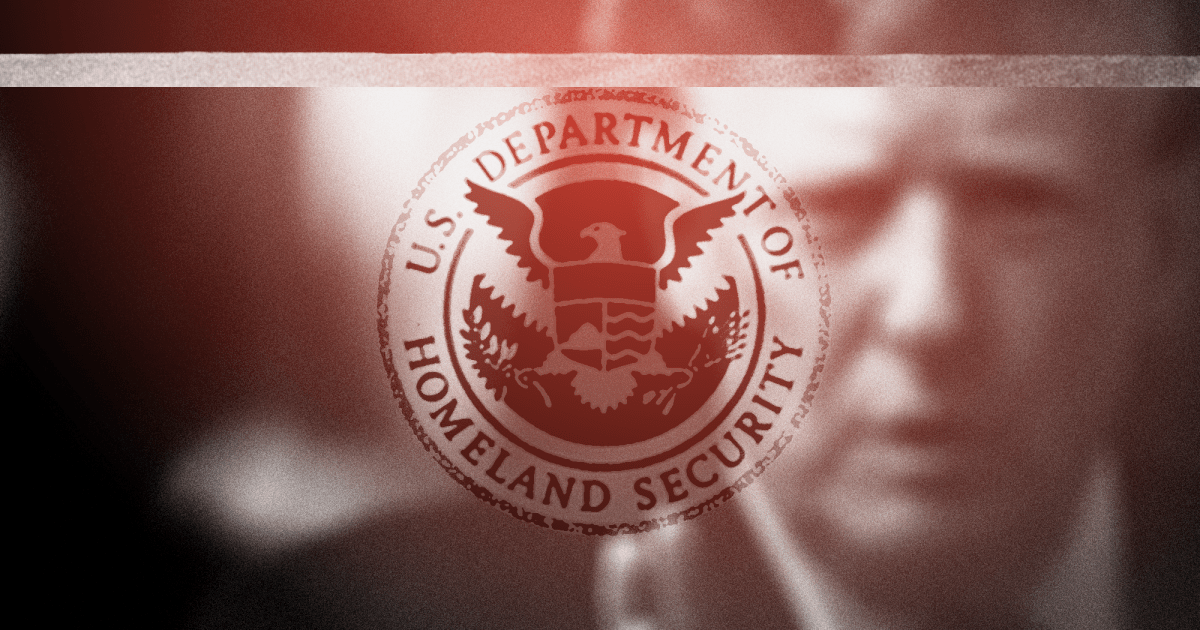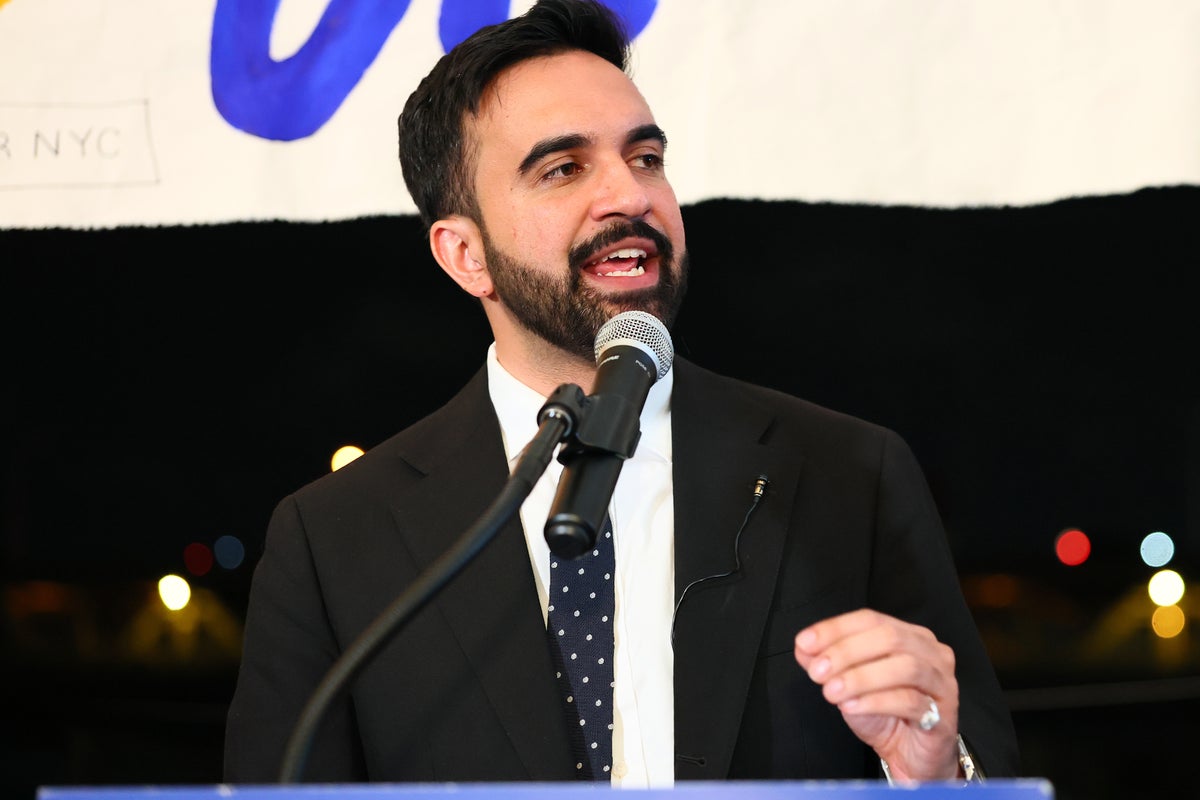Since March, the Trump administration has dismantled a leading office at the Department of Homeland Security whose mission was averting terrorism and targeted violence. The Center for Prevention Programs and Partnerships, known as CP3, has been stripped of funding, and most of its 40-plus personnel have been fired, reassigned, or otherwise pushed out. Amid this process, the White House temporarily put in charge a 22-year-old Trump superfan who arched an eyebrow for his agency portrait and has zero leadership experience in government, let alone in national security.
The demise of CP3 comes as the White House has diverted major law enforcement and security resources toward deporting undocumented immigrants. It also comes as high-profile acts of political violence have surged in the United States.
The list of recent devastation includes an ISIS-inspired truck massacre in New Orleans, the bombing of a fertility clinic in Palm Springs, and a spate of antisemitic attacks—including the murder of a young couple working for Israel in Washington, DC; an arson attack against the governor of Pennsylvania; and a fiery assault on peaceful marchers in Boulder, Colorado. Last year, a healthcare CEO was gunned down point-blank in Manhattan, and President Trump barely avoided death from an assassin’s bullet on the campaign trail. Twelve days ago, a right-wing extremist in Minnesota targeted Democratic state lawmakers in a deadly gun rampage, killing former house speaker Melissa Hortman and her spouse, and gravely wounding two others. The nation is now also on heightened alert after Trump ordered the bombing of Iran, a major state sponsor of terrorism.
Though political extremism has been rising, it is almost never the only factor in targeted violence, including with most, if not all, of the above cases. Most perpetrators are also driven by a mix of rage and despair over acute personal problems, such as financial or health crises—and many are suicidal. This complexity was a focus of CP3’s $18 million in annual grants to state and local partners. Drawing on long-established public health research, the office worked with law enforcement, educators, faith leaders, and others to use “upstream” interventions with troubled individuals who may be planning and moving toward violence.
The work gained traction over the past couple of years, according to William Braniff, a military veteran and national security expert who was director of CP3 until March. He said that many states were working with the office to build this kind of strategy and that CP3 was flooded with $99 million in eligible grant applications—exceeding its funds by more than fivefold. He resigned when eight of his colleagues were fired without cause.
“I think that CP3 has been dismantled out of ignorance,” Braniff told me. “A lot of the headquarters-based offices within DHS are being drastically reduced in size or shuttered, and CP3 was among them. This is incredibly short-sighted.”
As the wave of recent attacks shows, a variety of extremism is fueling the danger. Researchers have tracked growing acceptance and endorsement of political violence in America in recent years, particularly among people who identify as MAGA Republicans, a finding reaffirmed in a new national study from the Centers for Violence Prevention at University of California, Davis.
“We’re at real risk of normalizing political violence as a part of our democracy.”
In response to my email asking for an explanation of the shutdown, DHS assistant secretary of public affairs Tricia McLaughlin said CP3 “plays an insignificant and ineffective role” in DHS counterterrorism efforts, and further claimed, without providing any evidence, that CP3 was “weaponized” under the Biden administration for partisan purposes.
Braniff, who is now executive director of the Polarization & Extremism Research & Innovation Lab at American University, explained in our recent interview (lightly edited below for clarity) how CP3 built out its national model for violence prevention. He also spoke about what citizens and communities can do to counter the danger of political violence—and the disturbing normalization of it.
First, can you talk a little bit about the CP3 strategy and how the programs worked?
From school shootings and grievance-based workplace violence, to hate-fueled violence, to terrorism, we needed an approach out of the federal government that would address all of those. And so we looked to the public health community, and specifically the decades of work on violence prevention from places like the Centers for Disease Control—evidence-based programs for prevention of suicide, intimate-partner violence, violence against children, and community-based violence. And we said, well, what if we could apply those tested approaches to some of these more “exotic” forms of violence?
For too long, and especially after 9/11, we exoticized terrorism as this foreign kind of violence, when in reality, underneath the manifestation, you have these very human things happening: individuals who have unaddressed risk factors in their lives. That might be an adverse childhood experience, trauma, or financial hardship. That might be social isolation. And these risk factors, when left unaddressed, might spur the individual to go seeking answers down dark rabbit holes that preach hate, that preach violence for the sake of it. And regardless of the way that violence might manifest later, there are these upstream preventative programs that we can put in place.
So CP3 was the primary entity in the US government for creating these upstream programs, informed by public health. Social isolation is a massive risk factor for all kinds of negative health outcomes, including self harm and perpetration of violence. And so you look at these underlying risk factors and you say, well, we can actually mitigate against them. Very rarely in the national security realm do we get to talk about building positive programs that make us all happier and healthier and less susceptible to violence as a solution.
Sometimes people still might gravitate towards violence. And in those instances, we invested in secondary prevention. These are multidisciplinary interventions, so that if someone makes an offhand comment about starting a racial holy war, accelerating the downfall of the government, or being an infamous school shooter, these ideations of violence are not dismissed. We created these programs so that bystanders had a place to refer someone they cared about. And the purpose wasn’t criminal justice, it was to get them access to help.
“You have law enforcement officers around the country begging to get help from more mental health professionals and social workers. We were bringing these folks together and blending their assets.”
Out of the 1,172 interventions that we funded through our grant program, 93.5 percent of the individuals who were exhibiting threatening behavior got help. They got access to a clinician or a caring professional. In 6.5 percent of the incidents, the persons had already broken the law or were an imminent threat to public safety, and they were referred to law enforcement.
And that wasn’t the point of the intervention, but there was that safety net there for when that person really was an imminent risk to their community. We could balance public health and public safety through these multidisciplinary, evidence-based programs. There’s a lot of research on their efficacy, including to make sure that persons of color are getting equitable treatment and programs are not succumbing to implicit bias in schools and workplaces. And so there’s all sorts of value to these programs socially as well as economically. They’re much cheaper than criminal justice or the cost of violence.
Given that we’re in this heightened environment of political extremism and attacks, why shut down CP3? What is your view of that?
I don’t think that CP3 was targeted by the Trump administration specifically. I think that CP3 has been dismantled out of ignorance. A lot of the headquarters-based offices within the Department of Homeland Security are being drastically reduced in size or shuttered, and CP3 was among them. This is incredibly short-sighted.
Ignorance is not an excuse for what’s happening. The primary mission of DHS, as enshrined in the Homeland Security Act of 2002, is to prevent terrorism. And CP3 was the latest manifestation of an office within DHS that was trying to find a way to get traction in this prevention space. And we got it in the last couple of years. Eight states worked with CP3 to publish a state strategy, and when I left in March, another eight states were drafting their strategy with CP3’s help. Twenty-seven states had agreed to work with CP3 and were in the queue.
So we were normalizing this at the state and local level. Why? Because it’s pragmatic. It’s cost-effective. It works. You have law enforcement officers around the country begging to get help from more mental health professionals and social workers, because law enforcement officers are not equipped to do this kind of upstream intervention. We had $99 million of eligible grant applications for our $18 million grant pool, which means we were wildly oversubscribed. We were bringing these folks together and blending their assets.
A whole range of political ideology and extremism feeds into targeted violence, but we also know there’s been a steady rise in far-right domestic terrorism in recent years. I’m curious how you view the long-term impact of losing this type of work in the federal government, particularly as it relates to things like Trump’s clemency for January 6 insurrectionists, including a lot of violent offenders who attacked police. Some groups associated with that event are again instigating on social media for potentially violent behavior. What message is this all sending, and what does it do in terms of the political environment that we’re in?
It’s such a good set of questions. We’re at real risk of normalizing political violence as a part of our democracy. And that is a potential death blow to a free and open society. It’s not to say that these things can’t gravitate back towards a norm of nonviolence. But right now we are creating permission structures for individuals to dehumanize the transgender community, to dehumanize Jews or equate their individual actions with that of the Israeli government, half a world away. We’re at risk of normalizing school shootings among youth who don’t imagine a healthy future for themselves and are succumbing to this kind of nihilistic manipulation that we’re seeing in [online extremist] movements like “764.” And when these norms are accepted at a societal level and encouraged at a political level, they become entrenched and really difficult to reverse.
And so what we were doing at CP3 and what we’re doing now at my current organization at American University is trying to normalize prevention, the idea that we can and should build thriving communities where individuals don’t need to buy the violent empowerment that either a politician or an online groomer is selling that leads to violence.
The things you’ve listed are incredibly concerning, and frankly, we all have to decide that we care about this issue. If we don’t, if we decide we’re going to be apathetic about it, the violence is going to win the day because it’s going to capture the news headlines, and the algorithms, and the path of least resistance is to surrender to violence as a norm in our current information environment. And so it’s going to take intentional decision making by all of us as individuals to decide that’s not the country or the community that we want to live in.
So there are some real problems in our political system right now with a permission structure, as you describe it, for violence. Isn’t rejecting that part of not normalizing it?
Yeah, absolutely. One of the techniques that we study and work with at PERIL is called video-based inoculation. It’s the idea that you can give individuals a microdose of some sort of manipulative tactic that they might come across on social media or cable news. And you give them this microdose of this manipulation so that they develop “antibodies” to it. They realize that they’re being manipulated.
That is really important, for us to sort of throw sand in the gears of what otherwise spreads like wildfire when we’re passive consumers of information. And so with the last antisemitism video that we tested, individuals were 24 percent more likely to openly challenge manipulative material online if they saw the inoculating video first. So we think there’s a lot of promise there to engage all of us as stewards of our information environment.
Is it your hope or expectation that this kind of prevention work will come back more strongly in the federal government in the future?
Yes, it has to. The threat is growing and manifesting in more and different ways. There’s been nearly a 2,000-percent increase in mass casualty attacks in the United States since the early 1990s. There are approximately three violent attacks per day that either are plotted or carried out in the United States. School shootings are up linearly since the Columbine attack of 1999. Political assassinations are being normalized. We have to marshal resources to push back on this. I do believe it’ll come back—I think Americans will demand it, but only if they know that violence is preventable, which it is.
If, instead, they’re told by their government or anyone else that this is just inevitable and we should be resigned to it, they may believe that. Instead of recognizing that the overwhelming majority of school shooters tell someone in advance they’re going to do it, and that nearly 50 percent of mass-casualty attackers tell someone in advance they’re going to do it, we’ll ignore that reality and just accept the violence. And so it’s really important that we continue to push on this now, but ultimately demand it of our federal government. Because again, this is doable work.















